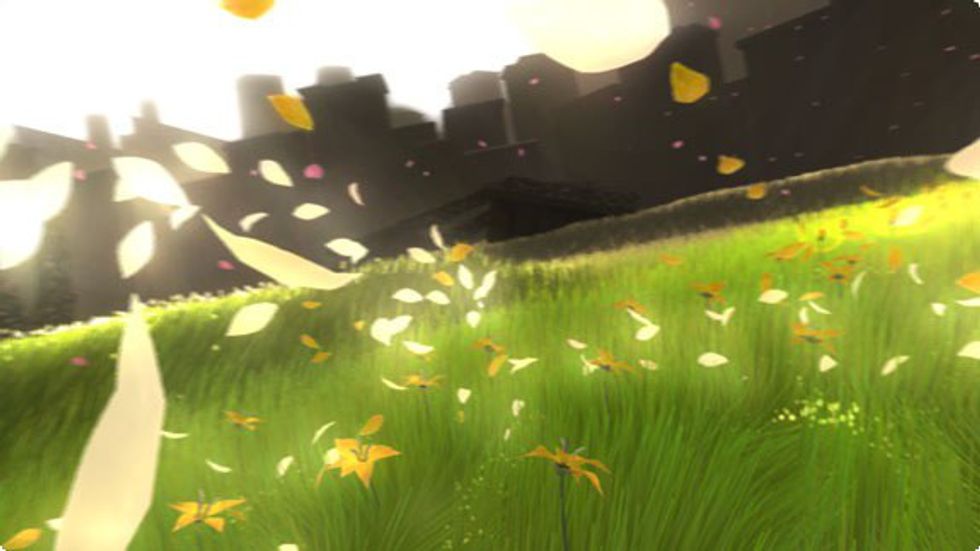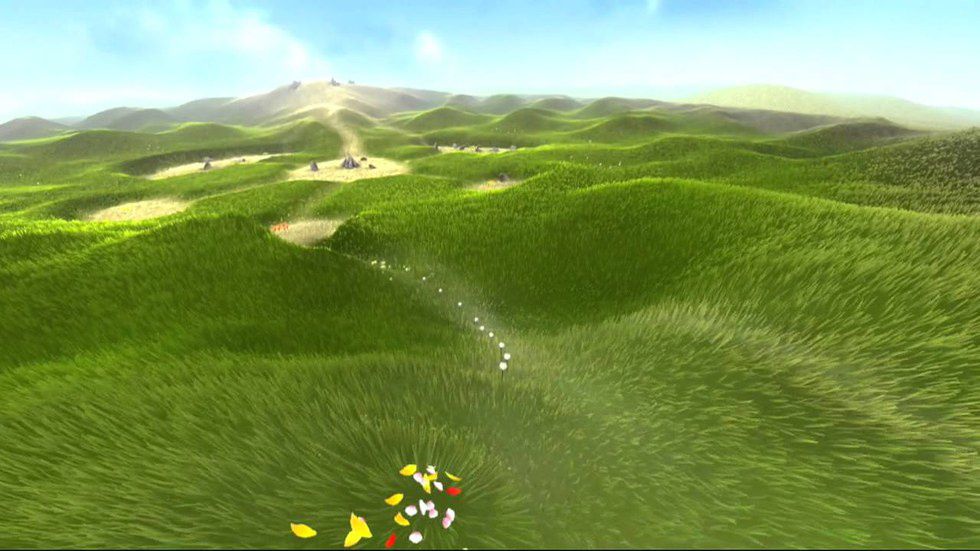Though budding as an artistic medium, many video games offer a wealth of aesthetic beauty and intellectual stimulation to those who play them. Take, for example, thatgamestudio’s "Flower."
Originally released for the Playstation 3 via PSN, "Flower"is now available on the Playstation 4 as well.
"Flower," while not as expansive as a Bethesda Softworks title or as narratively complex as a Hideo Kojima game, is a remarkable work of art in that it demonstrates a formal mastery of its medium. "Flower" could not be done in any other way. It has to be a game.
Also, it may be the prettiest game I’ve ever played. Y’know, just saying.
"Flower’s" narrative presentation is decidedly vague, and the game plays that to its advantage. In it, you use the Playstation controller’s Sixaxis controls (that is to say, motion controls) to direct the wind. The wind then picks up flower petals as they blow over several fields until you pilot a veritable swarm of flower petals.
In hindsight, it sounds a lot less poetic when I say it that way.
Past that, it’s up to the player to piece together a concrete narrative. Something resembling a story begins to come together a little past half-way through the game, but with its absence of characters and emphasis on visual symbolism to convey information, the experience is thrusted into the hands of the player.
This is where sound design comes into play. Alongside the visuals, the audio direction plays a major role in eliciting an effective response from players. Each flower you make contact within the game lets out its own unique audio cue, ranging from a violin note to a chorus to an acoustic guitar. Each note helps inform the overall tone of the setting and accompanies the gorgeous score within the title.
It can be rather therapeutic, honestly.
This interactivity is crucial to "Flower." Rather than having the player passively experience the events of the game, "Flower" encourages audience involvement. This decision, by extension, encourages emotional involvement, which informs players’ readings of the game.
The game itself is built around the emotional response from the player. By establishing an atmosphere of calm and relaxation, any variance from the norm stands out more dramatically. Without spoiling anything, "Flower" takes full advantage of that, and it uses the juxtaposition to direct the player’s attention towards its quasi-story.
Again, "Flower" doesn’t fall trap to the tyranny of narrative, even though it dabbles with the notion of plot. The game leaves its metaphors and imagery open to analysis, refusing to project any specific meaning upon them.
Is "Flower" an environmental tale of adaptation and change? Is it a Rousseau-like criticism of urban living conditions and a celebration of the natural world? Is it a tale of enduring hope in the face of overwhelming odds? Though "Flower" presents the player with aesthetic feedback for interaction, the game refuses to project a particular interpretation onto itself.
How artsy.
Not too long ago, "Flower" was rereleased for Sony’s Playstation 4. If you’ve got either a PS3 or a PS4, you ought to consider buying a copy. After all, "Flower" is some of the best interactive, artistic media out there.
























